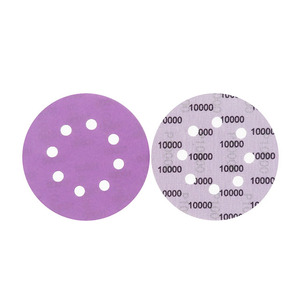Understanding Sandpaper Measurements
When it comes to woodworking, metalworking, or DIY projects, selecting the right sandpaper is crucial. Sandpaper measurements are an essential aspect of choosing the ideal type and grade for your specific tasks. In this guide, we will explore the different aspects of sandpaper measurements, including types, features, applications, and key advantages for your projects.
Types of Sandpaper Measurements
Different sandpaper measurements are categorized based on the grit size, size of paper, and backing material. Understanding these types can help you effectively select what suits your needs best:
- Grit Size: This refers to the size of the abrasives on the sandpaper. It's measured using numbers, where a lower number indicates a coarser grit, ideal for aggressive sanding, while a higher number is for finer finishing.
- Paper size: Sandpapers come in various sizes and formats, such as sheets, rolls, and discs. Common dimensions include 9"x11", 5"x9", and 6" discs, allowing for tailored solutions based on your project.
- Backing materials: The quality of sandpaper often depends on its backing. Common backings include paper, cloth, and fiber, contributing to the durability and flexibility required for different applications.
Applications of Sandpaper Measurements
Sandpaper measurements play a crucial role in diverse applications that span various industries. Knowing how to apply these measurements effectively can optimize your results:
- Woodworking: Coarse grits are used for shaping and removing material, while finer grits are perfect for smoothing and preparing surfaces for finishing.
- Metalworking: Specific measurements are utilized for finishing metal surfaces, removing rust, and when preparing for welding.
- Automotive: Sandpaper measurements are essential for bodywork, from sanding old paint to ensuring a smooth finish on new paint jobs.
- DIY Projects: Home improvement tasks often require a variety of sandpaper measurements to ensure surfaces are prepped correctly for painting, varnishing, or sealing.
Features and Advantages of Proper Sandpaper Measurements
Choosing the right sandpaper measurements offers multiple advantages that can markedly affect your project's success. Below are key features to consider:
- Quality finish: Using the correct grit and size ensures smoother surfaces and a professional appearance for your work.
- Efficiency: Proper sandpaper measurements lead to more effective sanding, which reduces time and effort spent on tasks.
- Diverse usage: Availability in multiple types means you can find sandpaper measurements suitable for any job, from delicate crafts to heavy-duty tasks.
- Cost-effective: Understanding and utilizing various measurements enables a more effective purchase strategy, reducing waste and maximizing material usage.
Conclusion
The significance of sandpaper measurements cannot be overstated in any sanding task. By understanding the types, applications, and features, you can choose the appropriate sandpaper that meets your project's requirements. With the right sandpaper measurements, you ensure quality finishes, efficiency in work, and enhance the overall effectiveness of your tools.






















































